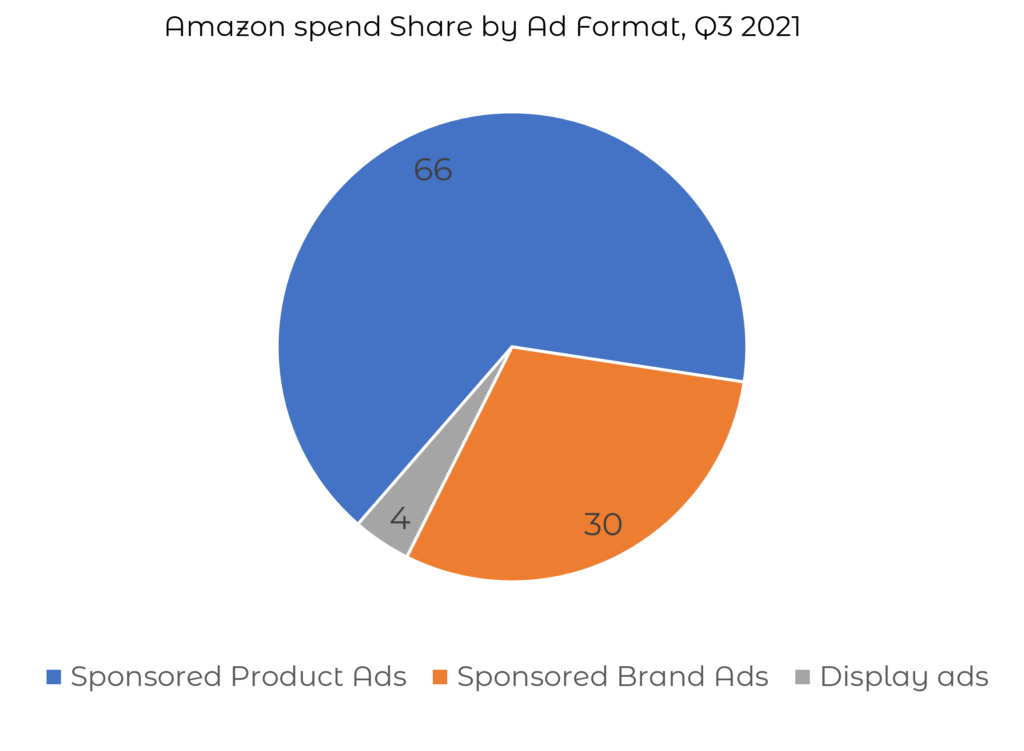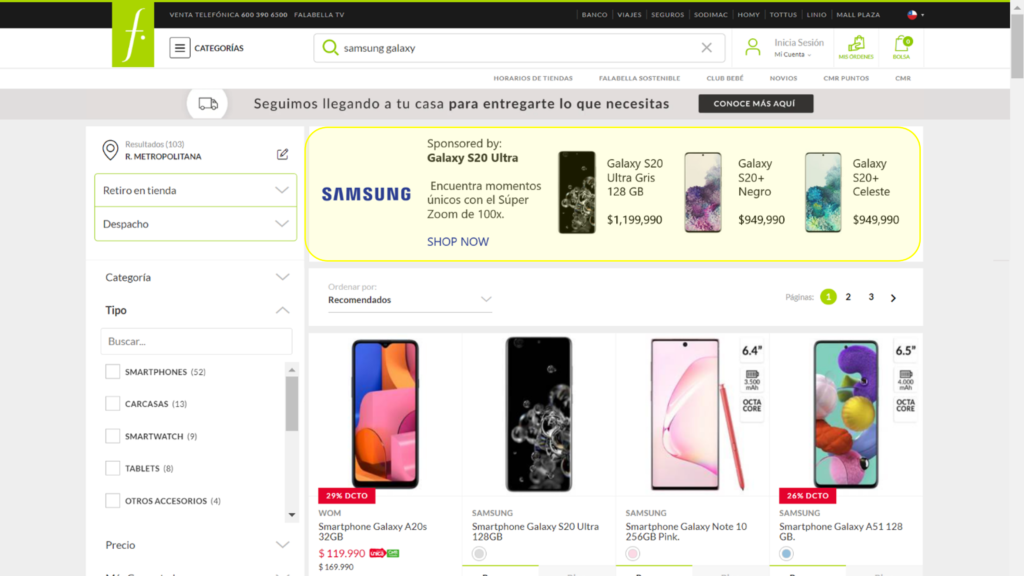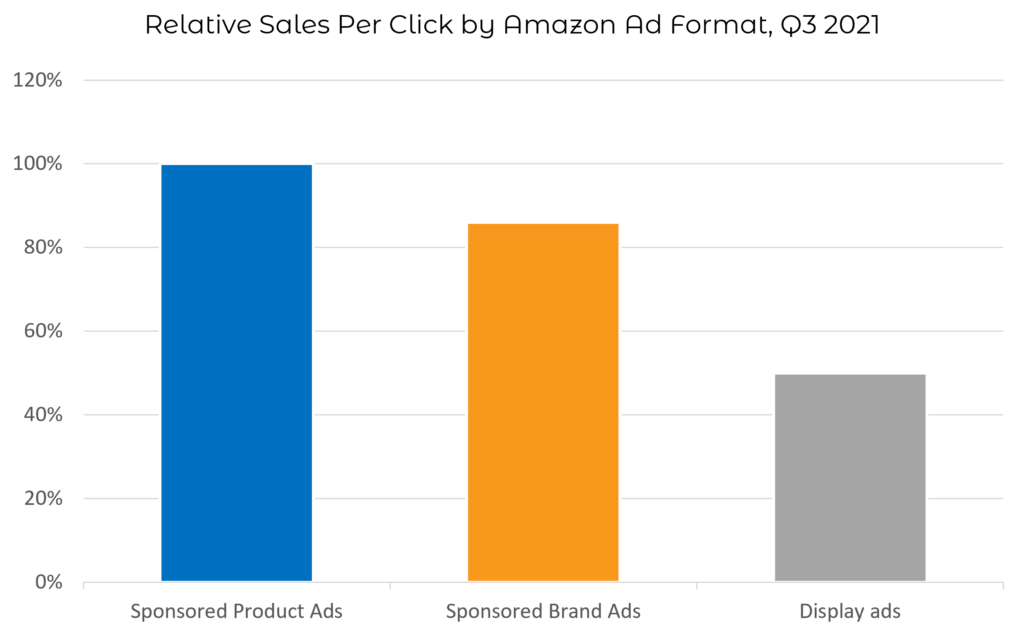The rise of sponsored brand ads and the fall of display

“While Amazon Sponsored Brand ads are typically an upper-funnel strategy, it has become increasingly effective at driving sales with greater efficiency than Sponsored Product ads. As such, advertisers have shifted budget towards Sponsored Brands where spend has increased 39% in Q4.”
These are some of the findings in Perpetua Q4 Amazon benchmark report that was published last week.
A few months earlier, in their Q3 2021 Digital Marketing Report, Merkle also talked about the rising star of ecommerce media – The sponsored brand ads: “Sponsored Brands spend share grew to 30% in Q3, thanks to 56% Y/Y spend growth.”
According to Merkle, 30% of the advertising budget on Amazon goes to Sponsored Brand Ads.

In Q4 2020, Sponsored Brand Ads spend share was only 19%.
Sponsored Products still drives the vast majority of Amazon search spend but Sponsored Brand Ads are quickly catching up.
Why Sponsored Brand Ads?
If Sponsored Product ads are the most targeted in-store promotion tool, the Sponsored Brand ads offer more holistic coverage for the brand or seller to showcase themselves and their offerings.
In other words, while Sponsored Product Ads enable advertisers to place one product on the right shelf, Sponsored Brand ads offer an entire shelf at the best position in the store.

Sponsored Brand ads are important for branding and increasing awareness or market share. It enables the offering of advertising solutions up the marketing funnel.
However according to the Perpetua report, the sponsored brand ads are now being used not only for up the funnel purposes but also for sales and performance.
In fact, they are getting better performance at driving sales reaching an average ROAS of $5.30, whereas that of sponsored product ads is $4.75.
The reason is that “Sponsored Brands eye-catching content attracts consumers to click on ads and allow brands to direct traffic to stores. The absence of competitor ads in branded stores removes distractions that consumers usually have when they are on the search results page, also resulting in greater conversion rate (~10%).”
As a result of the increasing interest in SB ads, their CPC increased as well by 11% (compared to last year).
According to Merkle Q3 report, the CPC’s of the SB ads increased by 76% Y/Y (almost double the increase of sponsored product ads).
From our experience with Sponsored Brand Ads, we see that they generate ~50% higher CPC’s than Sponsored Product ads, 50-% higher CTR and 100% higher eCPM!
The fall of display
As Sponsored Product Ads and Sponsored Brand Ads rise, and despite the fact that Amazon is releasing new features for its Display Ads, it seems that Display is going down.
According to Perpetua, there was a 12% drop off in clicks on Display Ads which signals a decrease in engagement. Display Ads CTR decreased by 16% compared to the previous quarter.
The basic fact is that Display Ads are no match for the Sponsored Brand ads and the Sponsored Ads. The last two are native and they actually help the shopper find relevant products faster. Display on the other hand interferes and therefor many times ignored by shoppers.
These two ad types simply do a better job for marketers and stores.
Having said that, and thanks to fact that the big brand advertisers are spending a lot of money on up the funnel ads during the shopping season, the Display Ads became more expensive in Q4 and enjoyed an increase of 20% in the CPC.
According to Merkle Q3 report the performance of the display ads is way behind the Sponsored Brand Ads and the Sponsored Products (50% less sales per click than SP ads and 40% less sales per click than SB ads).

What are you waiting for?
If you have been waiting for a sign to start offering Sponsored Brand ads on your ecommerce website these 2 reports should be it.
We will be happy to show you our platform (for Sponsored Product Ads and Sponsored Brands) and how you can easily integrate it and start selling both formats to your brand partners and sellers.
Click on the “request demo” button in the main menu and we will set it up.
About Mabaya
Mabaya offers a white-label self-service retail media platform for online retailers and marketplaces that enables sellers and brands to bid in order to ensure their products are listed in premium locations in the online store.
The platform is integrated in more than 50 ecommerce sites around the globe (such as Bol.com, Jumia, Manomano, Kaufland, Hepsiburada, Falabella etc.), serving more than 70,000 advertisers and sellers.

